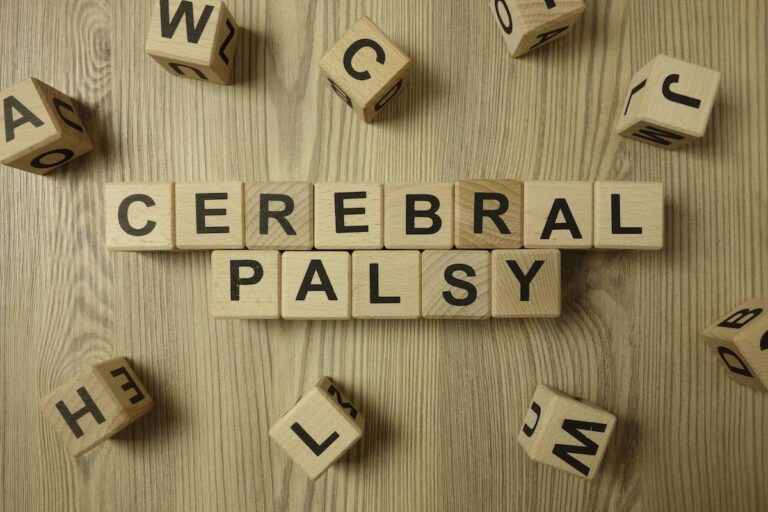
Call 24/7 for a FREE case evaluation
Call now (866) 393-4334

$100,000,000
in California case results
$20,000,000
in California jury verdicts
14
award-winning attorneys in network

Treatment for cerebral palsy can be complex, addressing a wide range of individual symptoms and conditions. As a result, doctors and medical specialists from multiple disciplines work together improving outcomes for children with CP. Early intervention and treatment have the greatest positive impact. Sadly, a cure for cerebral palsy (C.P) is not yet available; nonetheless, various cerebral palsy treatments and therapies currently exist to enable individuals with this condition to reach their fullest cognitive, emotional and physical potential.
The purpose of treatment is to enhance the quality of life for each patient, creating rewarding outcomes for children with all types of cerebral palsy. By improving overall health and reducing the incidence of complications, treatment reinforces independence and prepares CP patients to lead normal daily lives.
Cerebral palsy is a highly individualized disorder, impacting each patient in unique ways. Each patient’s cerebral palsy treatment largely depends on their own individual desires, based on the severity of their situation, as well as other pertinent factors.
Physical symptoms are not the only concern for doctors and therapists committed to the needs of CP patients. Social and emotional impacts must also be considered, calling for close collaboration between parents and various medical specialists.
Is the child content with his or her condition? Is a particular treatment in the child’s best interest? Are therapy and treatment stressful or demanding, beyond expected benefits?
Answers to these and other questions help caregivers craft comprehensive treatment plans, accounting for each child’s abilities, expectations, and emotional well-being. Direct input from the child is essential when measuring the therapeutic value of cerebral palsy treatment.
Pediatrician – Medical doctor who specializes in the health of infants, newborns, children and young adults.
Psychiatrists – medical doctor knowledgeable in physical medicine and rehabilitation, who can advise on improving the functional capabilities of the patients with C.P; including, occupational, speech, physical, and psychological therapies.
Physical therapist – A physical therapist is a health specialist with training in physical rehabilitation and human kinetics.
Neurologist – Medical specialist with a proficiency in diagnosing and treating and nervous system and brain disorders.
Occupational therapist – Health specialist with training in human occupation/participation; hence, he or she can help C.P patients participate in daily tasks through the employment of assistive devices.
Orthopedic surgeon – This is a medical doctor certified to diagnose and treat musculoskeletal diseases, injuries, and disorders. He or she can propose interventions to avert or treat abnormalities of the spine and limbs as a result of cerebral palsy.
Speech pathologist – This is a health practitioner qualified to diagnose and treat voice, language and speech disorders. Some kids with C.P may struggle with language ability, speech, swallowing, and in most critical cases may be completely non-verbal.
The level of involvement from these specialists may increase and lessen over time. This highly depends on the ever changing needs of the patient.
Therapeutic advances to cerebral palsy include a multitude of methods that are usually combined to provide an ideal treatment. Below are the most successful types of treatment options for those with cerebral palsy.
Physical therapy is among the most effective treatments for cerebral palsy. Often started at a young age, the treatment builds strength, flexibility and coordination, improving a child’s independent motor functioning. Physical therapy is personalized to each case, focusing on the most-affected areas of the body.
Before starting treatment, physical therapists conduct comprehensive assessments of each patient, evaluating motor abilities and work with parents to identify areas of concern. Therapy recommendations include stretching exercises, strength training and muscle relaxation techniques.
Therapists provide help at different stages during development, shaping treatment to provide the greatest benefit for each patient’s evolving condition. Early care, for example, includes hands-on work with caregivers, preparing them to respond to the needs of a child with cerebral palsy. Physical therapy changes when a child ages, leading to shifts that emphasize standing, walking, posture and other physical functions.
Physical therapy helps improve the overall quality of life for cerebral palsy patients by:
Scoliosis, or spinal curvature, is commonly associated with cerebral palsy. Achilles tendon irregularities are also prevalent, causing patients to walk on their toes. Physical therapy helps with these conditions – not only improving physical performance, but also serving as a vital preventative measure against complications.
Early treatment mitigates worsening symptoms, such as contracture, a common condition of spastic cerebral palsy characterized by stiffness and constriction in joints, muscles, and tendons. Physical therapy strengthens muscles and increases range of motion for CP patients. In addition to therapy performed during regular office visits, physical therapists also share vital tools and information for managing the disorder at home.
Orthotics plays an important role in physical therapy. As part of comprehensive treatment, assistive devices are sometimes used to compensate for weak muscles or increased muscle tone often seen with CP. Casts, splints and braces provide support and encourage improvements in posture, mobility, balance and normal physical development.
Another important component of a total health management plan, occupational therapy strives to increase independence and improve quality of life for cerebral palsy patients. For adults and teens, this may include therapies reinforcing the patient’s ability to work, but occupational therapy is not reserved for a particular age group. Wide-ranging benefits of treatment improve independence in personal care, performing household tasks, mobility and practical activities of daily living.
Occupational therapists are concerned with patients’ status and abilities in these areas:
After thorough evaluation, treatment follows, using recreational activities, play, self-care, and other approaches to engage therapeutic benefits. Childhood occupational therapy is guided by the needs of each patient, focusing on activities most meaningful to the child treated. Therapists treating CP may integrate adaptive equipment into treatment protocols, including special utensils, adaptive scissors and writing implements, and clothing designed for each patient’s abilities.
Speech and language therapists diagnose and treat disorders commonly resulting from cerebral palsy. Speech therapy helps children speak more clearly and use assistive devices or sign language, as needed. Speech and language therapy focuses not only on the expressive aspects of speech, but also on the receptive part, facilitating better communication and understanding.
Feeding, breathing and swallowing may present challenges for CP patients, so speech therapists/pathologists also assist in these areas. Treatment strives to improve muscle control and strength, resulting in better oral motor abilities. By making it easier to eat, therapy helps cerebral palsy patients maintain healthy body weight and nutrition.
In collaboration with other therapy disciplines, speech pathologists use various techniques to make an impact. A play-based approach is often used to keep young patients motivated and prompt communication.
Depending upon the needs of each patient, a speech therapist may work inside a child’s mouth, stimulating muscle control in the mouth and throat. And when severe limitations are present, the specialists also help children learn to use assistive equipment and sign language to communicate.
Therapy typically calls on caregivers and family members to reinforce treatment at home, furthering progress made during office visits.
Massage therapy is used to help cerebral palsy patients relax, heal, and rehabilitate properly. Massage therapy works on the soft body tissues which not only help with flexibility, but total rejuvenation. Therapists are able to improve muscle functionality through targeting soft tissues such as:
There are a range of clinical practices, which are derived from other idealistic advances to body function and dysfunction. Once these practices are employed in combination with evidence-based medication they are referred to as complementary medication; once used in place of evidence-based medicine they are referred to as alternative medicine.
Complementary and Alternative medicine (CAM) therefore, is another option that a lot of parents have opted to treat their cerebral palsy affected kids in a holistic, natural way. The most popular CAM treatments for CP patients include:
Medication for cerebral palsy is prescribed to ease symptoms and treat co-occurring conditions. Numerous pharmacological interventions are used to alleviate moving difficulties, including relaxants and drugs aimed at spasticity associated with cerebral palsy.
Before making recommendations, doctors consider the severity and location of spasticity, as well as the child’s age and overall health. Treatment can be short-term, responding to a particular condition, or may include long-term medication therapy.
Antispasmodic drugs are usually administered by mouth, but can be taken as injections, directly into affected muscle groups. When other conditions are present, co-occurring alongside primary CP symptoms, doctors use conventional treatments to provide relief. Common recommendations include the following:
Stool softeners and mild laxatives may be used to increase regularity and overcome constipation experienced by cerebral palsy patients.
Surgical intervention improves functional outcomes for some CP patients, mitigating spasticity and improving mobility. It is not the best approach in all cases, so specialists look at many factors before advising surgery.
Orthopedic surgery provides the greatest benefit for spastic cerebral palsy patients. Procedures alter muscles, tendons and ligaments to increase range of motion and reduce limitations cause by muscle tightness and other restrictive conditions.
Surgeries that are most common for those with Cerebral Palsy include:
It’s the job of a parent to become well-informed about as many different therapy and treatment options, for their kids as possible. Nonetheless, no amount of research can surpass the advice of a qualified medical specialist. Determining the appropriate combination of therapies and treatments is best attained through close collaboration between doctors and parents.
WE’RE OPEN NOW
Our staff are standing by to help you find the perfect attorney for your case.
